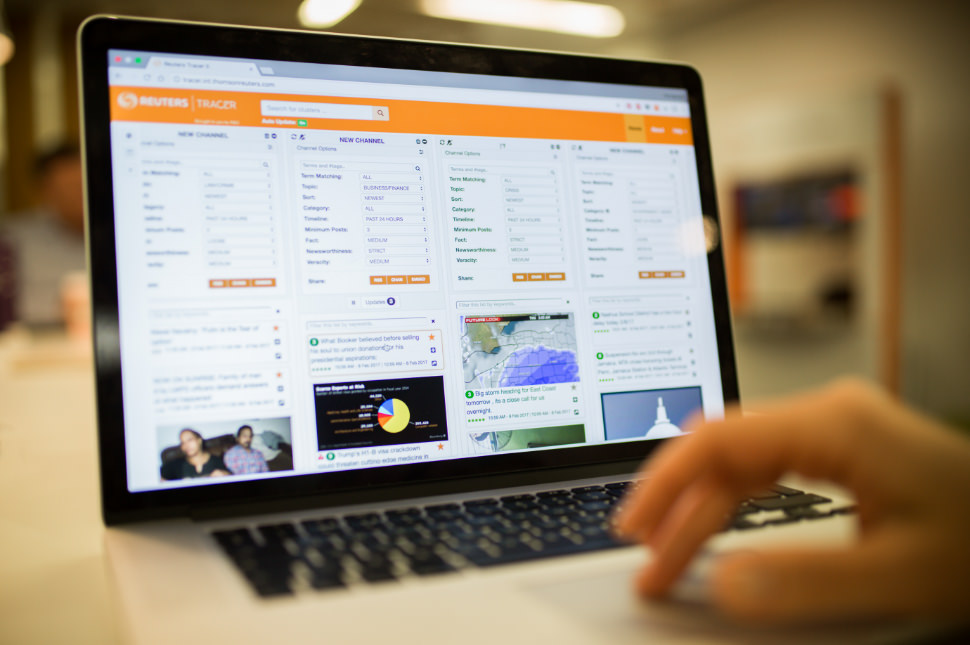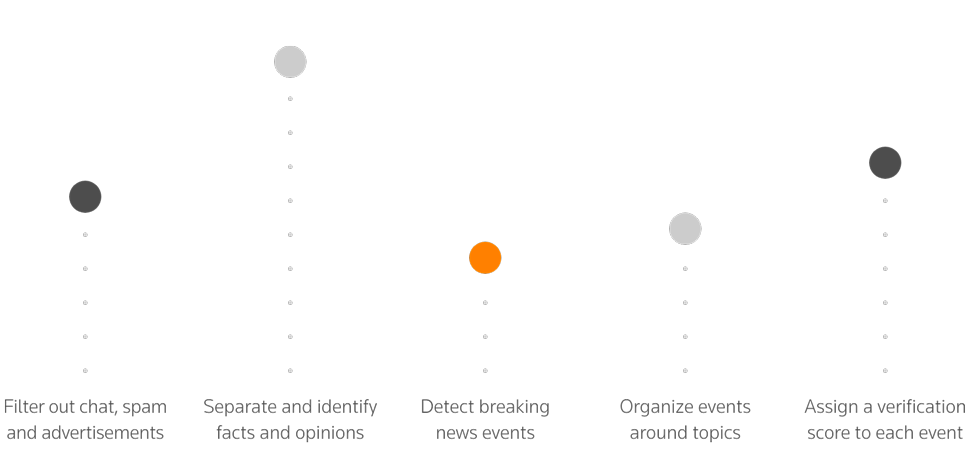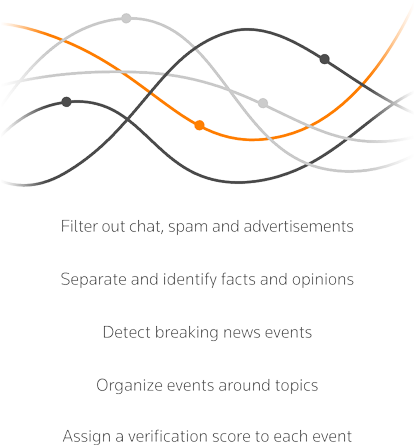Is it news or noise?
Thomson Reuters + Reuters
The veracity of news and the integrity of information and sources have been making headlines of their own lately. As a leading global news organization, Reuters is founded on trust and accuracy.
One essential function of Reuters is to alert people to news events as soon as they happen. Increasingly, events surface first in social media, as people post what they’re seeing, hearing and experiencing in the moment. Media organizations need to tap into that stream to detect when people are talking about real events, and then verify what is truly happening.
So how do we identify the real stories in the constant swirl of social media chatter?
An intrapreneurial partnership across teams within Thomson Reuters with relevant expertise and skills, Reuters and our enterprise technology professionals produced Reuters News Tracer™, allowing journalists to spot and validate real news in real time on Twitter®.
A world of connected eyewitnesses
With the proliferation of smartphones and social media, there are many more eyewitness accounts of a lot more events. Even with nearly 2,500 Reuters staff in 200 countries, our reporters can’t be everywhere.
Reuters News Tracer uses the power of the crowd to alert them sooner to what’s happening around the world, giving them more time to do value-added reporting work.
Since we started keeping analytical records about a year ago, Reuters News Tracer has beaten global news outlets in breaking over 50 major news stories. This has given our Reuters journalists anywhere from an 8- to 60-minute head start.

Reuters News Tracer detected accounts of a shooting in San Bernardino, California, before any major global news organization. When an earthquake in Ecuador caused the deaths of 77 people in April 2016, Reuters News Tracer gave Reuters journalists 18 minutes to gather more information before another news outlet broke the story. It helped our news team get an 8-minute head start in reporting on the Brussels bombings, and a 15-minute head start on sending out a news alert on the Chelsea bombing in New York in October 2016.

How does it work?
Reuters News Tracer harnesses the power of cognitive computing and machine learning to extract insight from the immense stream of social media. Specifically, it runs machine-learning algorithms on a percentage of Twitter’s 700 million daily tweets to find breaking news.
Reuters News Tracer tracks Twitter perspectives to detect, verify and alert users to breaking news stories from around the world, using our own topic-focused algorithms to find emerging events in social media.
How? First, it looks for clusters of tweets talking about the same event. Then, the algorithms generate a newsworthiness rating – whether emerging stories are worth reporting.
Reuters News Tracer uses proprietary algorithms to:
“Thinking” like a journalist to give real journalists a head start
We reverse-engineered how a journalist would verify whether a piece of information was true – such as the identity of the person who tweeted, whether it’s a verified account, whom they follow, who follows them, whether the tweet contains links and images, and the structure of the tweets themselves – along with many other factors.
The machine “learned” from historical data and Reuters journalists to determine which tweets were newsworthy and truthful. The human expertise of Reuters journalists – and judgment of their peers across the world – forms one of over 700 signals the algorithms read from a tweet to determine its veracity.
Reuters journalists then independently verify the information through their own channels and reporting before publishing.
Reuters News Tracer has been in development for two years and is used in Reuters newsrooms internationally. Its value is in its verification capabilities, not just in its speed of knowing something newsworthy has occurred.
Thomson Reuters professionals partnered across teams and geography to design the algorithms that combine artificial intelligence with the human intelligence of Reuters journalists who honed its procedures.
The capabilities of Reuters News Tracer have been covered by Harvard’s Nieman Journalism Lab and featured in the Columbia Journalism Review. Its state-of-the-art technology resulted in six patent filings and 20 published papers.
Trusted news
Reuters unbiased approach is coded into the Thomson Reuters Trust Principles, which have their roots in an attempt by the British government in 1941 to coerce the agency into becoming a propaganda tool in the war effort. Retained when Reuters was acquired by the Thomson Corporation in 2008 to form Thomson Reuters, they state the “integrity, independence and freedom from bias” of Reuters staff “shall at all times be fully preserved.”
In 2016, Reuters received 102 award recognitions, up from 85 in 2015. Among the highlights: a Pulitzer Prize for Breaking News Photography; three Overseas Press Club Awards; two Gerald Loeb career achievement awards; six Society of Publishers in Asia (SOPA) recognitions; six Pictures of the Year International Awards; and two Webby Awards.






